Hong Kong : The ‘Umbrella Revolution'
Text And Photos By Nilantha Ilangamuwa
30 September, 2014
Countercurrents.org
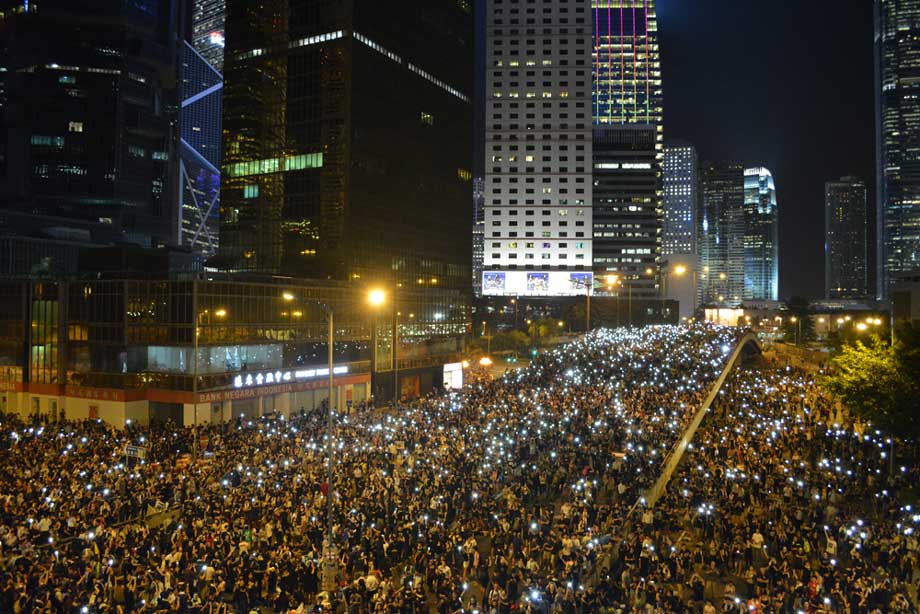
The “Hong Kong Wall of Shame” is filling up with yellow ribbons which are giving a sharp tone to the true sound of freedom. The barrier is no longer a barrier, it has turned into a tool of expression and expectation of the future. Iron bars surrounding the legislative council, known as LegCo, has been renamed the “Hong Kong Wall of Shame” by the protestors.
The mass movement was unimaginably in Hong Kong and filled the major roads in this global economic hub. Most of the protestors are by young eager youth with smart phones, urging the government to accept their demand; the demand, for total democracy. In other words the right to vote and elect the ruler of their choice by democratic means, which, has been denied since the handover in 1997.
The protest is not an accident but rather a well-planned act of opposition to what the people in general don't want. It is an act of civil disobedience in an hour of need.
Bob Kraft, who is sitting in front of the “Hong Kong Wall of Shame” and helping those are coming forward with their symbol of solidarity. Bob has lived in the Hong Kong Special Administrative Region (SAR) for over twenty years and is actively involved in the many political and social movements. Like most of the protestors he also using his smart phone to convince the people of the importance of the protest and urging more to join while spreading messages among social networks.
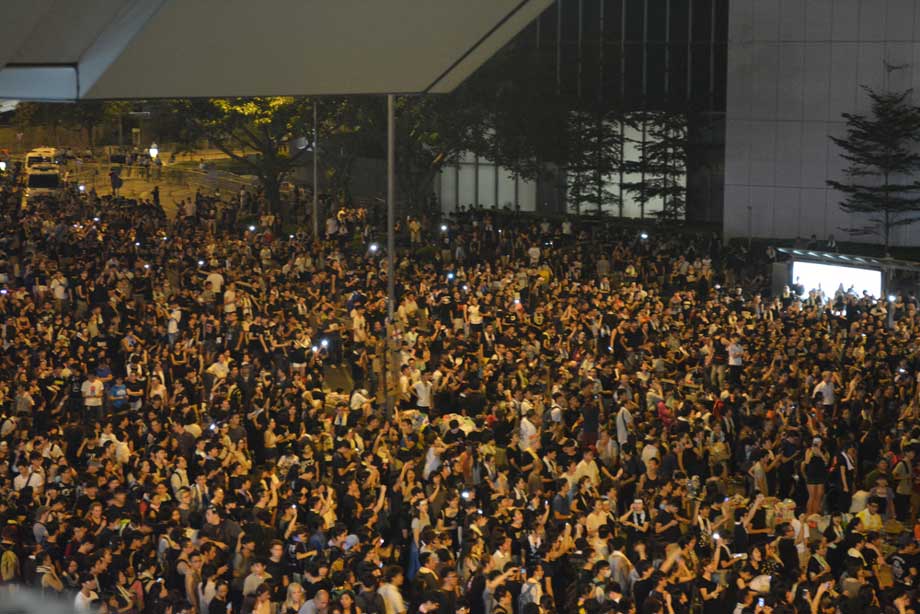
They, the protestors came into the streets as the central government maintained a hardline on what the majority of Hong Kong people have been dreaming about for years.
The students are not only protesting against the government. Hundreds of them are helping others while supplying essentials and cleaning the streets. They are taking care of their Motherland while urging for universal suffrage in 2017.
I walked inside the protest areas, along with two friends, and we were able to cover a large section of the protest in the three hours we were there. However, it was an impossible task to cover the entire protest as hundred thousand people gathered and non-violently engaged in this mass mission of what they hope will achieve, “total freedom” through the “Umbrella Revolution”.
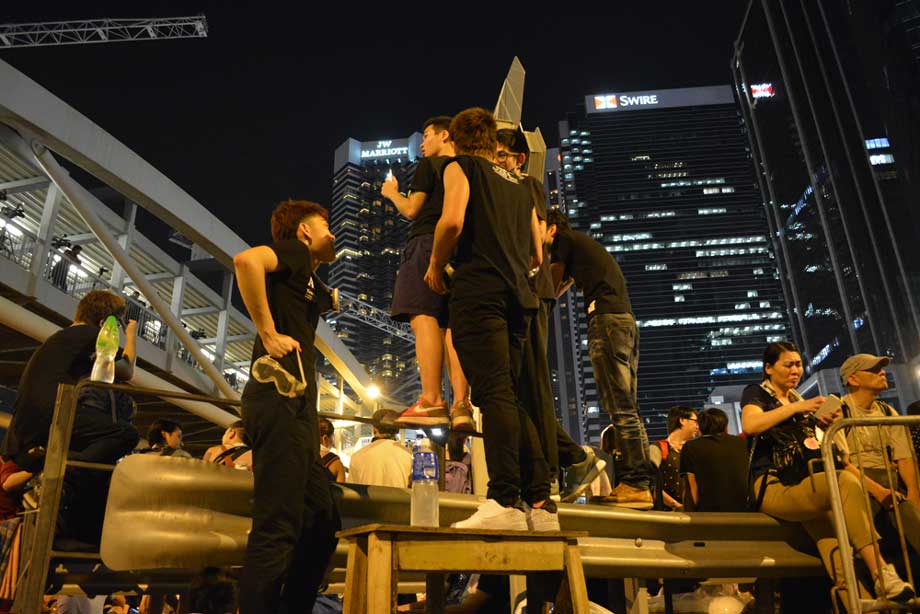
Many who joined the protest are students. Most of them have an idea of why they were joined the protest and what made them to join. None of them are blindfolded.
It was hundred times more than what I experienced ( click here to read my article titled, Scholarism : Walking the frontier ) in 2012, when the group of students raised their voices against what they called, “educational reforms” introduced by the central government.
But unfortunately most of student leaders, including Joshua Wong Chi Fung, a seventeen year old student, who was a driving force of organising students in 2012, against the Beijing sponsored National Education Curriculum, were arrested and later released. The latest reports indicated that over 80 people were arrested by the police.
Meanwhile, the reports has been widely reproduced the numbers of those who wounded and the use of tear gas. However, some protestors reported that the police used rubber bullets as well.
“We don't have anger against police, we understood they are doing what they were ordered to do,” one of students said.
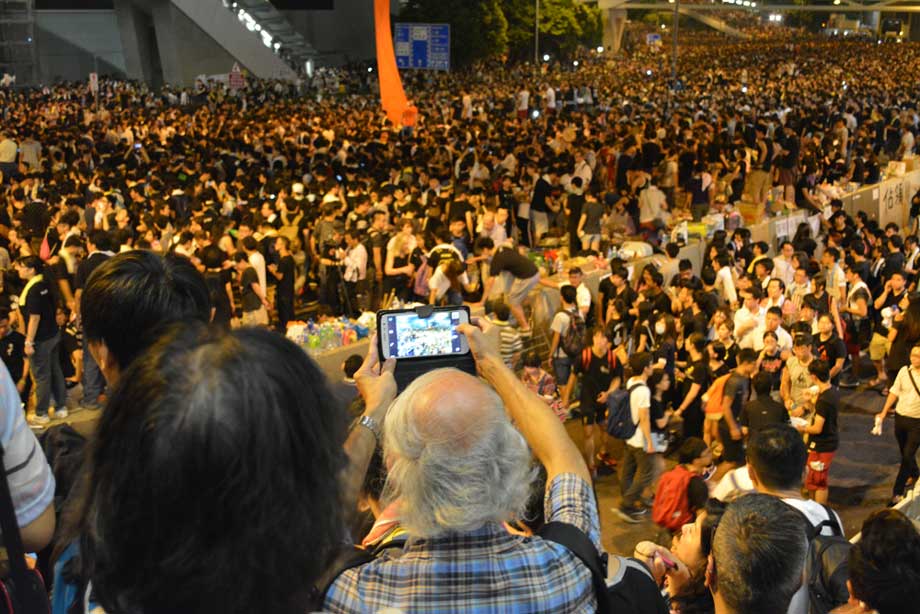
The tension erupted in this semi-autonomous region, months after Leung Chun-ying, who is the third and present Chief Executive of the Executive Council of the Hong Kong Special Administrative Region was installed in the post by the central government. His unpopularity and political beliefs pulled him into a hot pot of many issues.
Nevertheless, there were fearful speculations among people in Hong Kong that the Chinese military may be directly involved to quell the non-violent protest. But Leung denied the rumour and carried on with is work while ignoring what most of protestors think as essential.
“He must come down and talk to the people,” Hiew Sik Ho (16), high school student from Kowloon , said.
He went on to say, “if he (the Chief Executive) really thinks about people in this country, he must resign then we have to find a way to solve this very problem in Hong Kong ”.
“I wish if we could finish the protest and start our normal life tonight, but it all depends on the Chief Executive and his government”, he added.
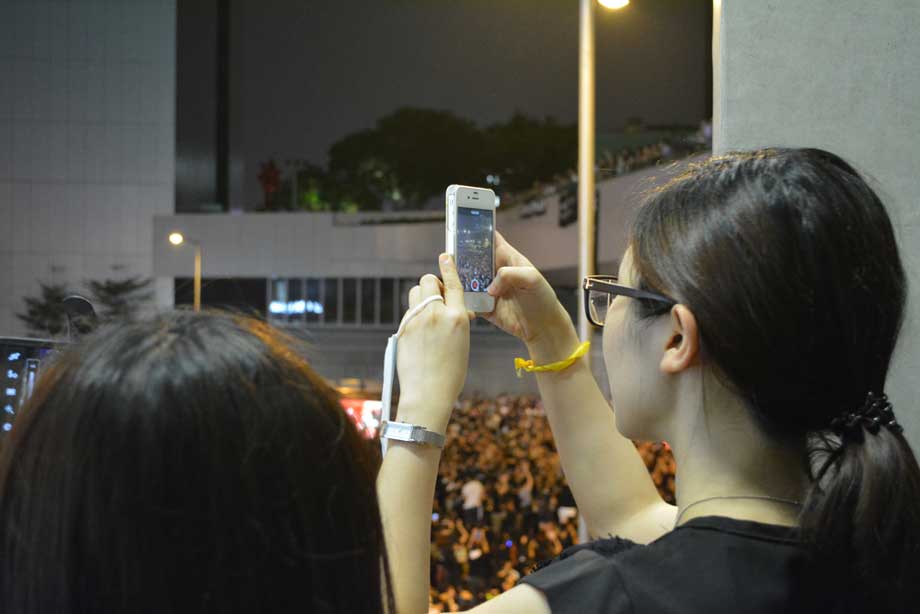
However, as a daily newspaper based in the territory pointed out in its editorial today (30 September), “the options are rather limited. First, it could escalate the use of force at all costs to crack down hard on the protestors to reopen the roads. But use of greater force will risk plunging Hong Kong into turmoil, a very dangerous course to take.”
The fears are spread, and some of parents did not allow their children to participate in the protest as they understood potential cruelty of the Chinese government. But students had no alternative but to ignore their parents' warnings and join the protest.
Mavis Kam, a student at the Lingnan University where she studies Human Resource Management, had to ignore her parents' strong warning to join this remarkable civil disobedience of mass action.
“My parents were opposed to me when I was seeking permission from them to join the protest on last Sunday. They immediately mentioned about what happened in Tiananmen Square on June 4, 1989 , where thousands of innocent people were killed. They are still living with fear, so they don't want to see us as next victims of the Chinese government,” Mavis told while a part of the protest in front of LegCo with her colleagues.
However; it is neither, Beijing 's Tiananmen Square on June 4, 1989 nor the Leftist riots against British colonial rule in 1967 where dozens of people were killed. The situation in Hong Kong is different from the past as the global economic hub is explored internationally, unlike China .
But an ongoing protest may create a unique history in the former British colony against the mainland China , as it already created global awareness and it was able to reach every citizen in this territory to be a part.
Hours are left, after the protesters set the deadline as the 1st October. The National Day celebration has already been cancelled by the government. However, the 1st October, can be turned into a day of political turmoil if the government does not listen carefully to the people.
The moment of sensitiveness is very much important and it must be read carefully and act wisely. One small incident can trigger huge and an unimaginable explosion.
The moment when the people lost their trust in the government and their leadership will be rectified when the people will not get hurt but regain their trust. Then the positive hope will arise, allowing them to move forward.
The use of tear gas by the government revealed its unwillingness and poor judgement to undermine the people power. Its looks like the Chief Executive and the government are not capable of reading the real sentiments of the public in Hong Kong while acting behalf of the central government.
I can do no better than take the words from the late Pete Seeger to understand the energetic moments of the youth in Hong Kong .
“….look, I got a hammer
and I got a bell
and I got a song to sing
all over this land
it's the hammer of justice
a bell of freedom yeah
it's a song about love
between my brothers and my sisters
all over this land ……” ( - Pete Seeger and Lee Hays )
Nilantha Ilangamuwa edits the Sri Lanka Guardian, an online daily newspaper, and he also an editor of the Torture: Asian and Global Perspectives, bi-monthly print magazine. He is the author of the just released non-fictions, “Nagna Balaya” (The Naked Power), in Sinhalese and “The Conflation”, in English. He can be reached at [email protected]
Comments are moderated
